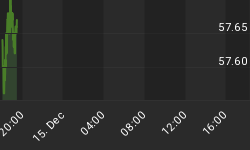How the BLS Determines Employment Revisited
Here are some interesting charts from reader Tim Wallace regarding "covered employees", those employees that have unemployment insurance.
Covered Employees by Quarter Since 2000
Note that the number of covered employees is still below the 2004 trough and that it took 16 quarters in the wake of the 2001 recession to get back above the pre-recession highs.
It has now been 11 quarters since the 2008 high. However, we are still not back to the previous recession dip.
Change in Covered Employee Coverage by Quarter
Cumulative Change in Coverage Since 1st Quarter 2000
No Driver for Jobs
The number of covered employees soared during the housing and commercial real estate bubbles and at the end of the dot-com bubble.
What will be the next big driver for employment? I cannot come up with any nor do I think there will be any in the midst of a Schumpeterian Depression phase of the Long Wave trough.
That is one of the reasons I proclaimed three years ago "expect structurally high unemployment for a decade". The others reasons are global wage arbitrage, tax policy, and massive consumer debt.
For a detailed explanation of Schumpeterian Depression please scroll down to the sections of Creative Destruction labeled Comments From "BC" followed by Schumpeterian Depression.
Slowing Global Economy
Bear in mind the global economy is slowing with many structural problems as noted yesterday in Gold Reacts With "Big Yawn" to ECB Announcement
Partial List of Problems
- Sovereign debt default crisis in Eurozone PIIGS: Portugal, Ireland, Italy, Greece, and Spain.
- US debt ceiling concerns
- US fiscal deficit concerns
- US total debt concerns
- Reckless, unsustainable credit growth in China
- Rampant inflation in Brazil, Russia, India, and China, the BRIC countries.
- Yuan peg to the US dollar
- Debt and deficit concerns in the UK
- Japan interest rate and total debt concerns
- Massive global trade imbalances
I could easily add another 10 items related to global housing bubbles, demographics, unfunded future liabilities, state pension plans etc.
Not only are there huge US structural debt issues, there are huge global issues. For a suggestion as to how to fix the global imbalances, please see Hugo Salinas Price and Michael Pettis on the Trade Imbalance Dilemma; Gold's Honest Discipline Revisited
Reader Question on Covered Employees
Reader Will Worth from Texas also sent in a chart of covered employees similar to one of the charts from Tim Wallace. Will Worth asks ...
Mish,
In the jobless claims data, "covered employed" dropped by 8.3 million people during the recession it has since recovered by only 247,323 people. Yet, as estimated by the monthly "establishment" and "household" surveys, there have been between 1.4 million and 1.7 million jobs created. Why are those not "covered employed" positions?
Will Worth
Closer Look at the Self-Employed
Self-employed are not covered by unemployment insurance. Thus, all of the people who have gone into business working for themselves are not covered.
The "self-employed" group includes all of those selling trinkets on Ebay as a job as well as all of those "working" in their multi-level marketing "business". Others struggle as non-covered employees in family related businesses.
Many of those jobs are not "real" and produce little or no income. However, these people are counted in the workforce if they respond to the BLS in the household survey that they "worked" any hours.
Once again the BLS does not ask directly ask people if they are employed. Rather the BLS determines that answer with a set of questions that likely produce a far different, and higher answer.
How the BLS Determines Employment
I covered this at length previously with a detailed list of actual questions the BLS asks in "Dropping Out of the Workforce"; Implications of the Falling Participation Rate
The key question appears to be question number two: "LAST WEEK, did you do ANY work for (either) pay (or profit)?"
Anyone selling trinkets on Ebay or selling any products in multi-level marketing companies is likely to answer yes. If so, they are "employed" but they certainly are not covered by unemployment insurance.
The implications of the above charts and commentary should be obvious. Things are much worse than the BLS presents.



















